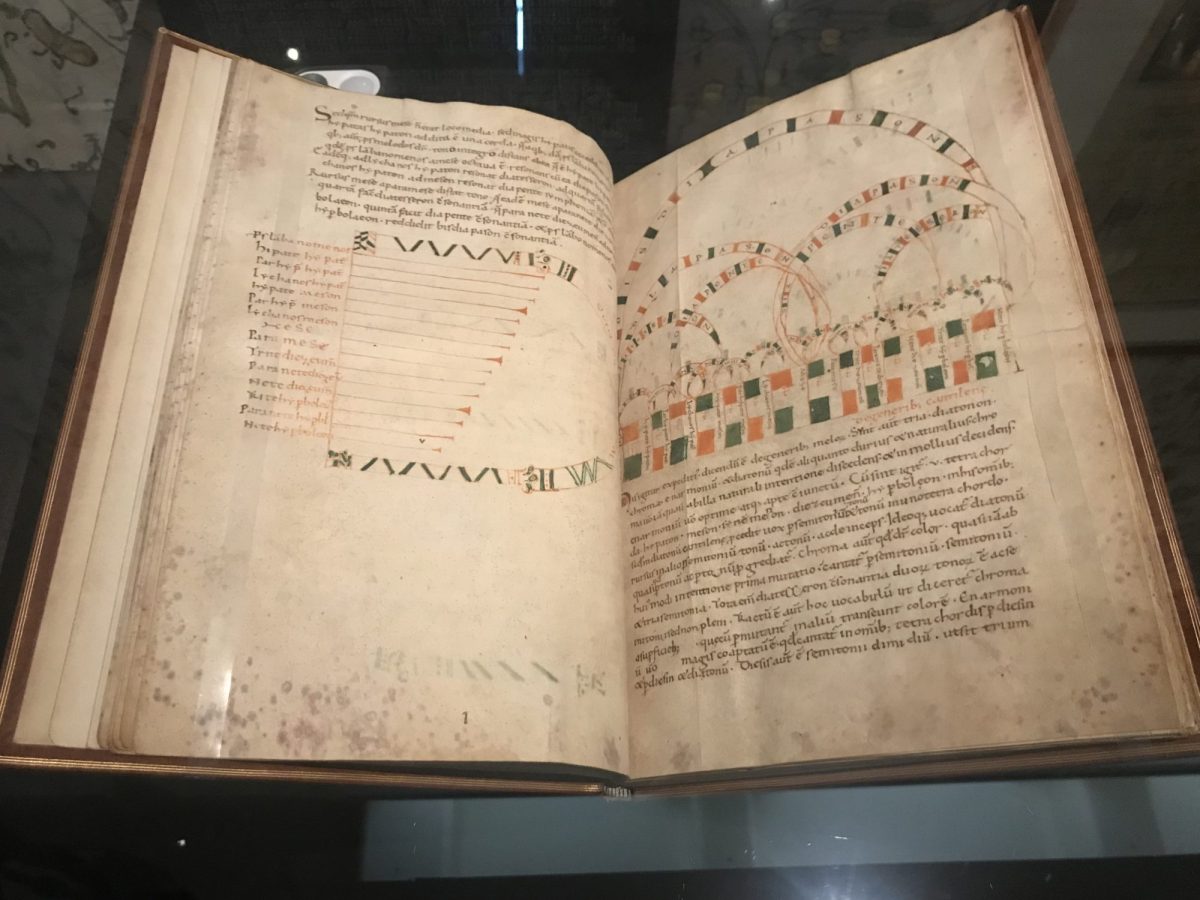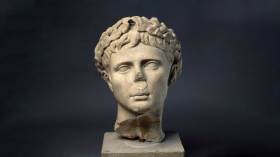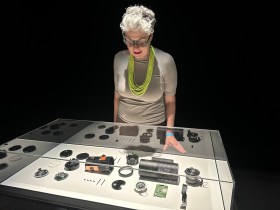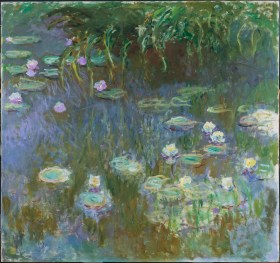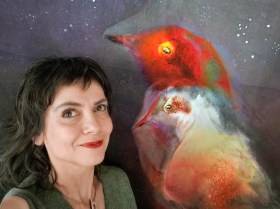The year 2005 saw the beginnings of many things that have since gone on to be viewed by millions of people, for instance Google Maps, YouTube and, in State Library Victoria (SLV), the World of the Book exhibition. Over the last two decades, this show has displayed over 5000 rare books and attracted over five million people from all over the world. To celebrate this, the library has put 20 quite simply astonishing books from its original opening show back on display, along with nearly 300 items from its vaults and some amazing new acquisitions.
The show is divided into five thematic sections, all housed within the Library’s fourth floor overlooking the iconic, magnificent La Trobe Reading Room. The exhibition starts spectacularly with the oldest book in Australia, Anicius Manlius Severinus Boethius’ De institutione musica (The principles of music), which was, according to the label, the “standard textbook on the theory of music throughout the Middle Ages”. Despite its age of nearly a millennium, its condition is something to behold.
The written word originally had a transactional function, as shown by a 4000-year-old cuneiform tablet, just a few centimetres across, which recorded some ‘economic transactions’ of people long ago.
The relationship between the written word, book technology and religions is fascinating – the show notes that the words ‘Bible’, ‘Torah’ and ‘Qur’an’ all have linguistic roots alluding to books, reading or words. Also, the invention of the Codex (essentially the Roman-created prototype of the modern book) coincided with the birth of Christianity, helping it differentiate itself from Judaism, which “used the scroll form for its sacred texts”, as the wall panel explains. Many religions are represented here with extraordinarily beautiful treasures from centuries past.
One of the incredible new additions to the Library’s collection – a knife/scraper used by the original scribes (writers) of ancient texts – dates back to the 1400s.
Each section of the exhibition is a concise chapter of both the book’s journey through human history, and humans’ journey through the book’s history. One section shows how early explorers/colonisers and scientists sought to visually document their discoveries – including, of course, when the English came to Australia. The famed illustrator John Gould has a volume here, where he calls the Australian grey-headed bat (i.e. fruit bat/flying fox) the “grey-headed vampire”.
Another section showcases the book/written word/art/culture in Japan, giving snapshots of the country’s literary and artistic history, from one of the oldest surviving texts in the world (a tiny scroll containing a Buddhist sutra) via classical images of ancient Japan, right up to contemporary times. One cabinet illustrates the symbiotic, cross-pollinating nature of cultures – influences entering Japan are shown by the Japanese manga Afro Samurai and the Japanese versions of Les Misérables and Harry Potter. Conversely, Japanese influences entering other countries are shown with Astroboy, The Wu-Tang Manual and Teenage Mutant Ninja Turtles.
The introduction panels to each section give perspective on the book’s place in human history, including its relationship with globalisation, mass media and the internet. For instance, one reminds us that “before the age of air travel and mass media, books were crucial in making the world accessible to many”, and another informs us that it was formerly “thought that the world’s knowledge could be collected between the covers of a book”, but in the “information explosion of recent times” this has been rendered impossible (outside science fiction – The Hitchhiker’s Guide to the Galaxy is a fictional book with, in theory, all the knowledge in the universe).
Read: Book review: Autocorrect, Etgar Keret
Despite this impossibility, humans have, throughout their history, tried to compile all knowledge within a book with dictionaries (in Chinese for 2000 years, in English much later in 1604) and encyclopaedias, one of which is in this exhibition: Vincent of Beauvais’ gorgeous Speculum doctrinale (Mirror of Doctrine), dated to around 1472 – which indeed was one of the earliest encyclopaedias.
All in all, this exhibition, especially in such a grand (and appropriate) setting as the SLV, is a sea of highlights, an ocean of gems. Book fans of Melbourne rejoice.
World of the Book: Celebrating 20 Years will be exhibited until 17 May 2026, State Library Victoria, Dome Galleries, Level 4; free.

